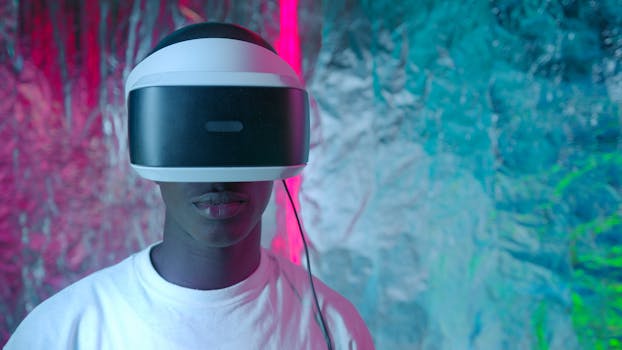Imagine experiencing your favorite games not just on a screen but through subtle gestures, heartbeats, or even a flick of your wrist. The presence of wearable devices is making this future possible. Each movement, response, and sensation becomes data, deepening player immersion in surprising ways.
Entertainment and gaming now blend with our daily activities, making screens less central. Wearable devices are pushing these boundaries, giving gamers new reasons to move, react, and collaborate in real time. This trend isn’t slowing down—it’s only evolving faster.
Explore the next wave of interactive fun powered by wearable devices. This article shows where technology meets entertainment and why learning about these innovations matters, whether you’re a curious gamer or simply enjoy a smarter way to unwind.
Interactive Play: Physical Motion Drives Gameplay Experiences
Games encourage movement instead of static play as wearable devices become common. This change unlocks richer, more interactive adventures, promoting real-world activity as a game mechanic you can feel instantly.
When movement matters, the energy of play ramps up. Wearable devices monitor gestures, position, and rhythm, creating new games that reward quick turns, accurate steps, and even your dancing style in sync with the action.
Body Tracking Expands Game Choices
Motion sensors in fitness bands let you run, dodge, or jump, bringing personal data into game outcomes. Action titles can adapt to your fitness, making every win feel personal.
Some narrative games track heart rate via smartwatches, shifting the game’s difficulty based on your adrenaline level. This makes fear, excitement, or tension more than just story—they feed directly into your gameplay curve.
For family games, wearable devices let friends compete using body movement, not hand-held controllers. Everyone gets involved, leading to laughter and unforgettable moments you just can’t script.
Gesture Control Creates Seamless Feedback Loops
Wearable rings or armbands recognize subtle gestures, transforming a wave or twist into in-game commands. Real-time feedback makes you feel in control without ever taking your eyes off the world.
Developers experiment with gesture combos. A tap and spin might cast spells or trigger special moves. Players now learn new gaming ‘vocabularies’ through wearable devices designed to recognize how you move naturally.
When wearable devices deliver vibrating feedback, each punch lands, and each spell cast feels tangible. This tactile response turns invisible actions into pulses and buzzes on your skin, bridging virtual and physical reality.
| Device Type | Common Game Interaction | Data Captured | Recommendation |
|---|---|---|---|
| Fitness Band | Step counting in adventure quests | Steps, motion, heart rate | Choose for daily activity gamification |
| Smartwatch | Heart rate-driven suspense levels | Pulse, gesture, notifications | Pick for stress-triggered experiences |
| Haptic Suit | Physical push feedback in shooters | Pose, spatial location | Invest for maximum immersion |
| Wearable Ring | Gesture-based spellcasting | Finger motion, position | Try for innovative control schemes |
| Smart Glasses | Augmented reality overlays | Head movement, eye tracking | Explore for mixed-reality gaming |
Real-Time Feedback Bridges Digital and Physical Worlds
Wearable devices stream feedback back to your body as you play. Vibrations, temperature, and lights adjust in sync with your actions, eliminating the imaginary wall between game and reality for a more visceral experience.
This feedback loop motivates players to adjust strategy in real time. If your wristband begins to vibrate as health drops, you might act faster, making your response time part of the core game mechanic.
Practical Ways to Use Real-Time Feedback
Integrate your fitness band’s alerts into game cues, so a buzz on your wrist means to dodge right now. This tangible jolt transforms simple reminders into critical tactical decisions.
- Set up step targets to unlock in-game content. This rewards everyday movement and makes fitness feel essential to progression. Sync your fitness tracker weekly for a steady reward flow.
- Enable haptic alerts when in-game danger appears. Catch on-screen threats without looking, boosting your peripheral awareness. Adjust vibration strength for comfortable, timely nudges you can’t ignore.
- Pair ring gestures with quick item pickups. A double-tap can grab items instantly, prioritizing speed and fluidity of action critical in competitive games. Practice gesture accuracy to nail timing.
- Turn on smartwatch notifications for real-world reminders during long sessions. Manage health by staying aware of hydration or standing breaks, making entertainment healthier by design.
- Calibrate heat feedback vests for environmental hazards. Warmth or chill parallels fire and ice in-game, closing the loop between your senses and story environments.
With every feedback setting, experiment for comfort and responsiveness. Games become more memorable when physical sensations match the drama on screen.
Tactile Immersion Techniques
Customize your wearable devices so vibration, temperature, and even heart rate data mirror in-game events. This tactile mirroring deepens your sense of presence and changes how you react to digital threats.
- Adjust vibration sequences based on health events. Multiple short pulses signal danger, while a soft, steady hum means everything’s calm and safe.
- Use temperature changes to simulate environment. A quick heat burst mirrors walking near virtual fire. Lower the thermostat for icy areas, ideal for adventure games centered on exploration.
- Set heart rate zones as triggers for difficulty spikes. When your smartwatch detects excitement, it unlocks bonus foes or new skills, rewarding your passion for high-intensity play.
- Sync light cues on wearable devices with in-game events. Pulsing LEDs can act as radar warnings or power-up indicators, offering subtle guidance without breaking your flow.
- Personalize all feedback settings for sensitivity and frequency. Iterative tweaks help you find the most natural blend, so every sensation becomes a strategic cue rather than a distraction.
Mastering these settings can turn routine gaming into a multi-sensory adventure where every device and every sense plays an active role in your journey.
Social Dynamics Take Center Stage with Shared Wearable Data
Sharing wearable devices data transforms single-player routines into real-time group challenges and collaborative gameplay. The motivation to stay active, engaged, and present with others deepens every shared moment, making play social in surprising ways.
This layer of connectivity means players compete, cooperate, and communicate via their wearables, even when physically apart. A shared leaderboard reflects shared progress, creating a constant sense of team spirit or friendly rivalry.
Wearable-Driven Social Experiments
Developers design games where players’ step counts or heart rates form the basis for multiplayer achievements. Your daily walking goal becomes a shared team objective, making everyday habits more communal.
For parties, some experiences link multiple wearables to trigger group bonuses, like synchronized light shows or cooperative mini-games tied to everyone’s collective movement. This synergy is especially appealing for special events or team-building.
Live voice chat with motion-tracked avatars gives each participant a unique physical presence, bridging virtual and real interactions through wearable devices’ live data feeds.
Avatars Reflect Real-Time Data in Group Settings
In group titles, avatars can visually mirror your heart rate or movement, so your digital self reacts in sync with your real emotions or energy. Others can instantly spot who’s pumped or who needs a break.
This kinds of visibility builds empathy, as friends recognize stress or excitement, even from a distance. It also lets teams adjust tactics on the fly—if one member tires, the group adapts strategy to match.
Dynamic avatar feedback makes interaction richer, encouraging playful coaching, celebration, or even gentle teasing that brings everyone closer.
Immersive Storytelling: Personal Health Data Influences Game Worlds
Game designers use wearable devices to weave players’ health metrics directly into storylines. This real-time interplay of fiction and reality builds plot twists dependent on you, not just the characters—creating unique tension and investment.
Sudden heart rate spikes might open alternate quest branches or hidden rewards. Your emotional and physical responses become the fabric of the narrative, prompting you to care deeply about what happens next.
Dynamic Story Adjustments Driven by Data
Imagine suspense games where your trembling hand on a wearable ring signals fear, prompting bolder monsters or gentler allies to appear. In-game world shifts dynamically, keeping excitement high and outcomes personalized.
Energy levels tracked by fitness bands might mean the story pauses if you tire, or new obstacles only appear when you’re at peak activity. The plot designs itself around your real-time state.
Games that adapt their soundtrack, visual intensity, or event pace to your wearable data make each replay unpredictable and personally tuned.
Health Integration Inspires Mindful Entertainment
Gamified meditation apps now leverage heartrate to unlock virtual progress. Your ability to calm yourself correlates directly to in-game advancements, teaching techniques for both play and well-being.
Wearable devices cue reminders for hydration or deep breathing breaks, tied to stressful moments in tense games. These subtle nudges encourage healthy play and persistence.
Some titles record mood or fatigue, adjusting mission difficulty, so that tough days are less punishing and victories feel sweeter. Your digital adventures learn to respect your real boundaries.
Augmented Reality Expands Playgrounds into Everyday Spaces
Augmented reality titles make entire neighborhoods into playfields. Wearable devices like smart glasses and trackers overlay digital clues, characters, or hazards onto your surroundings, encouraging movement and exploration beyond the living room.
Players scan their space in real time, hunting for hidden items, competing in urban races, or collaborating on scavenger hunts—each step recorded and rewarded instantly by their wearable devices.
Spatial Awareness Enhances Game Mechanics
Smart glasses adjust digital overlays based on your head position. Directional cues and maps keep players moving toward challenges that update live as you walk, keeping play always relevant and close at hand.
Devices can register obstacles and alert you with vibration, making sure real-world safety comes first while chasing virtual rewards. This integration ensures that entertainment never puts you at risk unknowingly.
Even pets can join—wearable collars track their movement, triggering bonuses or side missions unique to furry companions so the whole household stays engaged.
Object Recognition Unlocks New Game Layers
By identifying household objects, wearable devices unlock unique digital tools or rewards—your kitchen counter might become a crafting table, or a park bench a monster’s lair, deepening engagement with familiar spaces.
Integrating barcode, color, or shape detection with wearable gaming encourages creative thinking. Suddenly, the everyday transforms into a key site for clues or cooperative tasks with friends nearby.
When wearable data connects to cloud servers, neighborhoods join global leaderboards, making every walk a step in a worldwide contest. This blend of local and remote connection keeps challenges fresh and competitive.
Customization and Accessibility Enhance User Engagement
Wearable devices make games more accessible than ever. Customizable settings offer assistance for different needs, while voice, gesture, or haptic feedback enables fans with diverse abilities to enjoy games fully.
Users build personal profiles, fine-tuning input, display, and notification preferences. This flexibility means anyone can start playing right away, regardless of physical or cognitive differences—making play truly universal.
Adaptive Controls Level the Playing Field
Players customize sensitivity or control schemes based on ability. Quick-swipe gestures can replace complex combos; haptic pulses replace sound cues, ensuring no one feels left out of fast-paced moments.
Adjustable vibration strength lets users with low sensitivity feel crucial events. Extra-large visuals or simplified displays, driven by wearable devices, cater to those needing more support exploring expansive digital worlds.
Games with subtitle timing coordinated via smartwatches make following plot or critical tips seamless for everyone, opening narrative-rich genres to broader audiences.
Profiles Enable Persistent Personalization
Transferring user profiles across devices allows players to keep achievements, progress, and preferences consistent. Pairing a new fitness tracker or ring won’t reset your journey—your successes travel with you.
Cloud syncing helps players jump between mobile, console, or wearable-equipped platforms without losing hard-won progress. Learning a single adjustment process makes each future device transition smoother.
Personalization grows as hardware advances. Players can tweak how much of their real data shapes the experience, finding a balance of privacy, immersion, and challenge unique to their own style of fun.
Broadening Creative Possibilities for Game Design
Game creators use wearable devices to invent genres and mechanics previously impossible. Tracking physical performance, environment, and personal wellness expands the design toolkit, rewarding innovators who embrace the new possibilities.
This shift also deepens the partnership between designer and player. Instead of dictating experiences, developers create frameworks that shape themselves based on users’ real lives, making each session a true collaboration.
New Genres Centered on Wearable Innovation
Developers blend fitness, mindfulness, and exploration within “active adventures” that adjust to your live data. Some titles measure endurance, while others gamify balance or breathing exercises, teaching life skills in unintrusive ways.
Emerging genres combine music and rhythm with wearable heart rate or gesture tracking. A song might only progress as you hit target paces, fusing workout and art into one responsive, entertaining loop.
Designers challenge themselves to invent ways to reward every kind of activity, from commute steps to meditation, broadening what ‘counts’ as winning far beyond high scores or fast reflexes alone.
Collaborative Worlds Adapt to Player Patterns
Game universes now change daily, bi-weekly, or even by the hour, updating missions, weather, or team matchups to match live patterns detected by wearable devices across active players worldwide.
Dynamic leaderboards and real-time cooperative events ensure no two gaming sessions play out the same. Friends might join a boss fight literally during a lunch walk, or unlock bonuses via sleep data tracked overnight.
New tools let community members suggest content updates driven by wearable device metrics. Player creativity becomes the backbone of viral, endlessly evolving worlds everyone can contribute to and shape together.
Growing Impact: The Lasting Influence of Wearable Devices on Entertainment
Wearable devices have changed more than the games themselves—they’ve changed how we think about play. With each new interaction and feedback loop, they deepen the way technology fits into our everyday lives.
This evolution isn’t just a phase. It signals a future where health, fun, and social connection blend seamlessly, empowering anyone with wearable devices to shape their entertainment their way, whenever and wherever they want.
Looking forward, the most exciting innovations will likely come from the creativity users and developers share, building new forms of interactive fun as wearable devices keep breaking the old rules. Entertainment, reimagined, is only just beginning.



